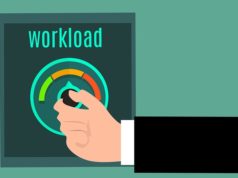
There’s a new work environment, where the old adage “time is money” is more relevant than ever. Technology tools help us accomplish more, but they also create complexity and distraction, undermining our focus.
To make matters worse, the boundaries between work and personal time are blurred, causing an unending stream of items on our to-do lists. Peter Drucker said, “Efficiency is doing things right; effectiveness is doing the right things.” Producing outstanding results at this pace requires an action-driven culture, where work processes are structured, but streamlined, and people focus on critical tasks.
Small companies evolve organically, but with growth, organized systems and strategies are necessary to sustain productivity and profit. While every industry has specific guidelines, there are some common strategies we can deploy.
Project Management Systems
Develop a workflow system showing typical steps and stages for each kind of project and all staff members involved. For client projects, assign a project leader and an assistant who maintain close contact. If your leader cannot fulfill their role due to illness or emergency, deadlines won’t be derailed. Project briefs, which outline client objectives, team members, schedules, and deliverables, keep staff updated on their own projects and those in other areas of the company.
Standardize common procedures using forms and templates. These save time, ensure consistent production, and help eliminate omissions. For example, using a checklist for incoming projects ensures you ask the client all the important questions, and another checklist for closing projects keeps the wrap-up organized. In addition, a routine internal review after project completion helps pinpoint weak spots and opportunities for improvement in the future.
Your simple template checklist for incoming projects should cover critical items like timeframe, budgets, key team members, decision makers and vendors, critical milestones, client materials needed, and other items to effectively start the project. During the planning meeting, the template might include questions for the client such as: Is the project timeline tied to an event or another deadline? Who is the team leader we will be contacting? What would success look like for you? Since our budget is limited, what are your three absolute must-haves?
Individual Productivity
Each person can minimize interruptions, both external and internal. Work today usually centers on a screen, which in itself provides a multitude of distractions. Here are some ways to maximize efficiency:
- Turn off email alerts. Scan emails quickly in the morning, looking for urgencies to be factored into the day.
- Batch email replies and phone calls. Designate a session in the morning and one in the afternoon, preferably before lunch and before the end of the day. People shouldn’t talk at length during those times.
- Limit time you spend on web research and social media to essential project work and focused networking.
It’s impossible to do strategic work if you are constantly interrupted. It’s been said that the definition of multitasking is doing two things badly at once. The brain doesn’t multitask. Create a quiet time of one to two hours each morning and afternoon to focus on critical projects. Do not answer email during your established quiet time. Close your door. Advise people to call if there’s an emergency.
It’s essential to empty your brain of miscellaneous tasks and put them onto a master list, whether it’s a computer document or a notebook. Break the habit of littering your desk and your computer with sticky notes, which are distracting and easily lost or ignored. Use one notebook for all messages, lists, and project notes. Dating the entries makes it easy to look back. Organize further with color-coded tabs or header highlights. A project list helps you make sense of the daunting work at hand. Use one folder and write each project on a sticky note. Then rearrange projects by groups and priority.
Information Management
An important part of your infrastructure is an enterprise-wide contact management system (CMS) to capture and organize data for access to client and vendor information and project updates. In addition, the IT department or consultant may need to install cloud, file-sharing, and mobile apps so staff can function in or out of the office. Keep technology systems up-to-date and staff well-trained. Technology that doesn’t work stalls everyone.
Designate and organize an easy-access central file system for team projects and records (except for those requiring confidentiality like employee or financial documents). Create an index binder so everyone knows where files are located. Use paper markers to sign out so everyone knows where to find a missing file.
Simplicity Rules
In a complex world, less is more and simplicity is key. Each problem we encounter presents an opportunity to rethink our work, streamline processes, and prevent errors and omissions. Growing companies must keep a fine balance between managing results and allowing creativity, ingenuity, and serendipity to flourish. Perhaps it’s time to assign one of your employees the new role of Chief Productivity Officer.
Article courtesy of SCORE & Free Enterprise.








